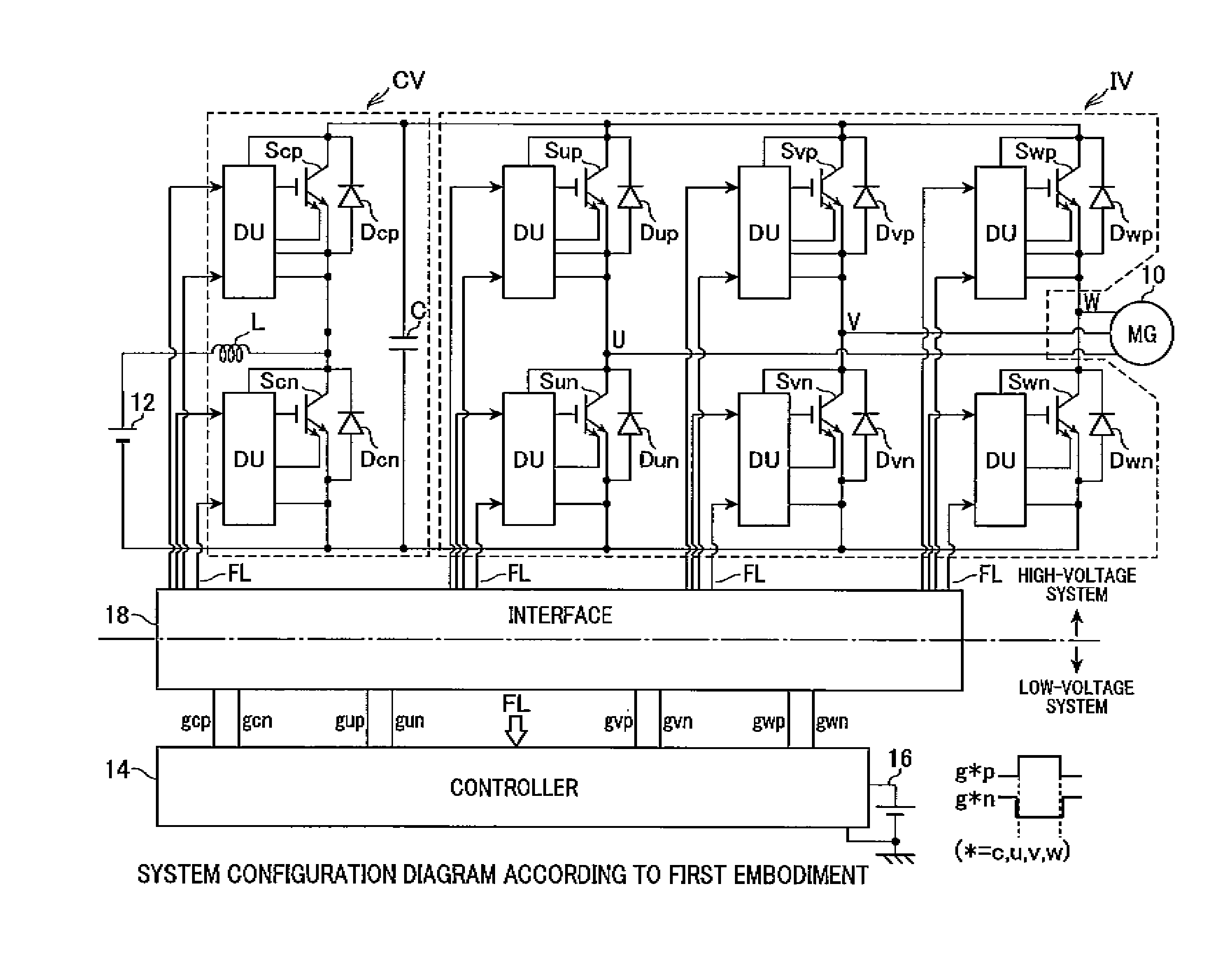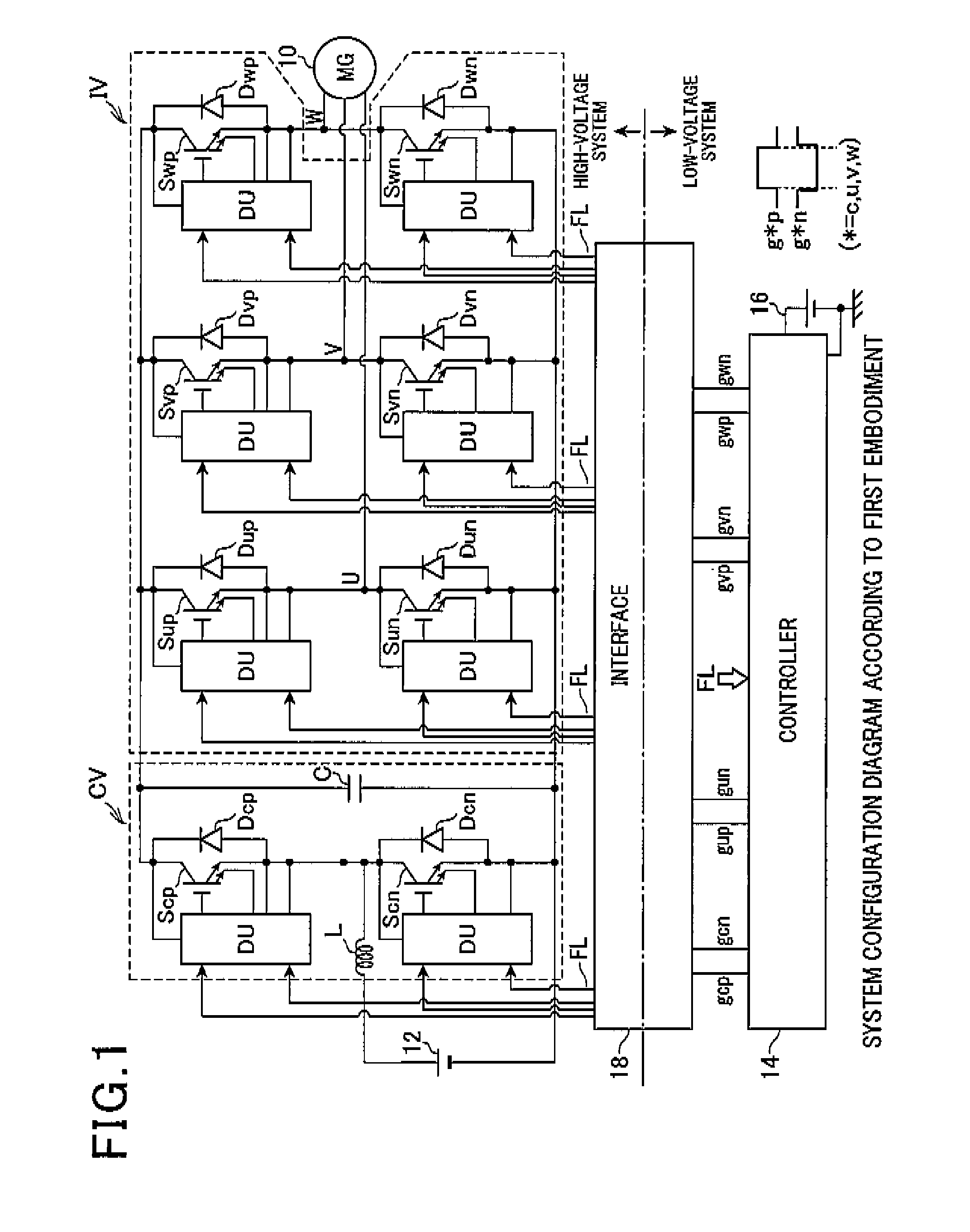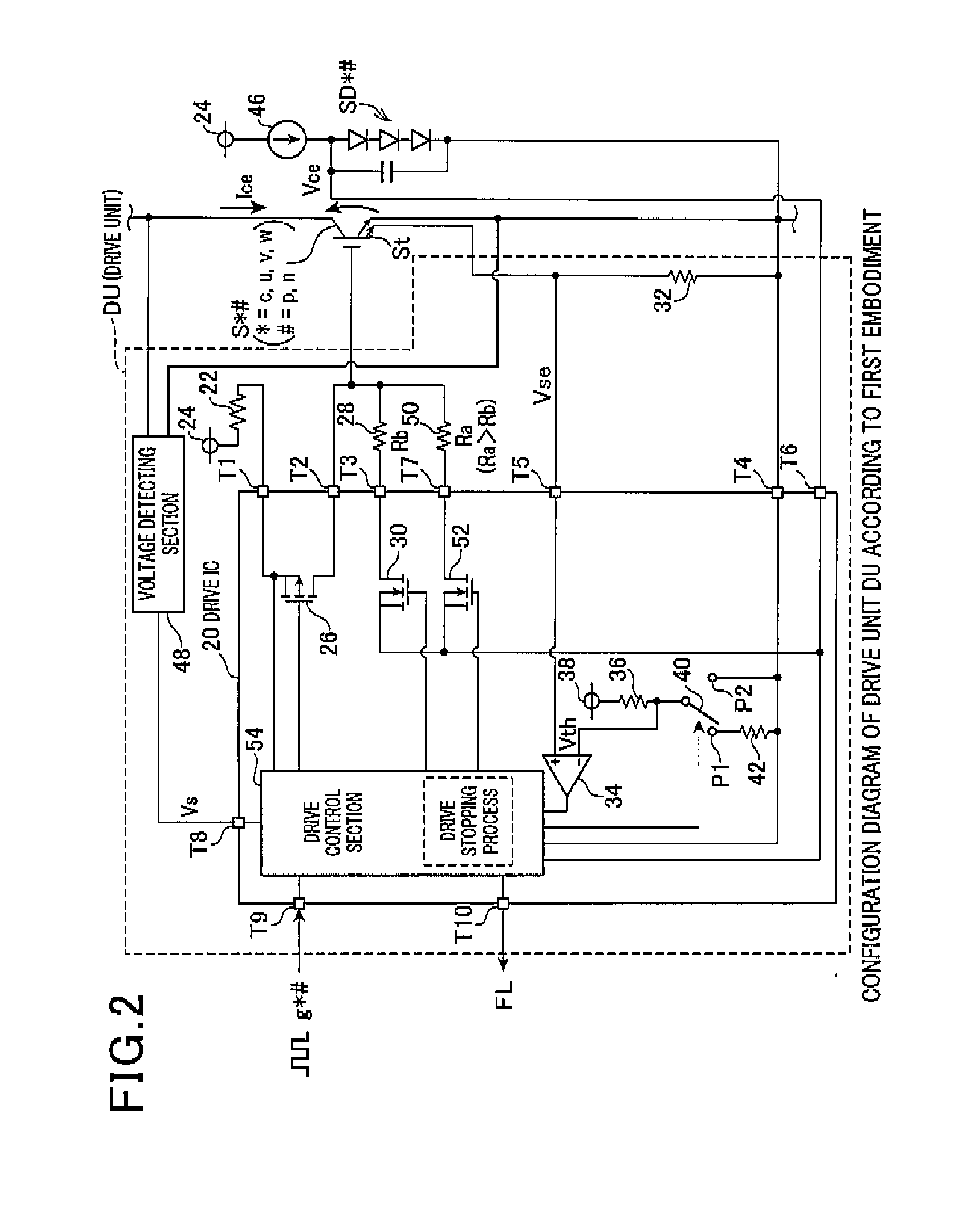Drive unit for switching element and method thereof
- Summary
- Abstract
- Description
- Claims
- Application Information
AI Technical Summary
Benefits of technology
Problems solved by technology
Method used
Image
Examples
first embodiment
[0022]A drive unit for a switching element according to a first embodiment of the present invention will be described with reference to the drawings. According to the first embodiment, the drive unit for a switching element is applied to a hybrid car providing both a motor as a main driving engine and an internal combustion engine (i.e. gasoline engine) as a supplemental driving engine.
[0023]FIG. 1 shows an overall configuration of a system according to the first embodiment.
[0024]A motor generator (MG) 10 is configured to be capable of being set to two operating states: “power running mode” providing a function as a motor that is a cruising drive source and “electric power regenerating mode” providing a function as a power generator. The motor generator 10 receives electric power from a battery and is used as an electric motor, or is used as a power generator for charging the battery. These modes depend on the operating state required. According to the first embodiment, the motor ge...
second embodiment
[0063]A second embodiment will hereinafter be described with reference to the drawings, focusing on the differences with the above-described first embodiment.
[0064]According to the second embodiment, as the threshold voltage changing process, a process is performed in which the threshold voltage Vth is changed based on the collector-emitter voltage Vs when the switching element S*# is set to the ON state. The process is performed in light of the judgment regarding whether or not there is risk of delay in the detection of excess current being possible based on the collector-emitter voltage Vs when the switching element S*# is set to the ON state, as well.
[0065]Here, the reason that the judgment regarding whether or not there is risk of delay in the detection of excess current is possible will be described. The sense voltage Vse does not reach a voltage equal to or higher than the collector-emitter voltage Vce of when the switching element S*# is in the ON state. This is because a vol...
third embodiment
[0080]A third embodiment will hereinafter be described with reference to the drawings, focusing on the differences with the above-described second embodiment.
[0081]According to the third embodiment, the collector-emitter voltage Vs used in the threshold voltage changing process is corrected based on the element temperature TD calculated from the output voltage of the temperature-sensitive diode SD*#. This process is performed based on the tendency for the collector-emitter voltage Vce when the switching element S*# is in the ON state to ordinarily become lower, the higher the element temperature TD is, in relation to the same collector current Ice, as shown in FIG. 9.
[0082]FIG. 10 shows the procedures in the correction process performed by the drive control section 54. The drive control section 54 is hardware. Therefore, the process shown in FIG. 10 is in actuality performed by a logic circuit.
[0083]In the series of processing operations, first, at Step S26, the drive control sectio...
PUM
 Login to View More
Login to View More Abstract
Description
Claims
Application Information
 Login to View More
Login to View More - R&D
- Intellectual Property
- Life Sciences
- Materials
- Tech Scout
- Unparalleled Data Quality
- Higher Quality Content
- 60% Fewer Hallucinations
Browse by: Latest US Patents, China's latest patents, Technical Efficacy Thesaurus, Application Domain, Technology Topic, Popular Technical Reports.
© 2025 PatSnap. All rights reserved.Legal|Privacy policy|Modern Slavery Act Transparency Statement|Sitemap|About US| Contact US: help@patsnap.com



